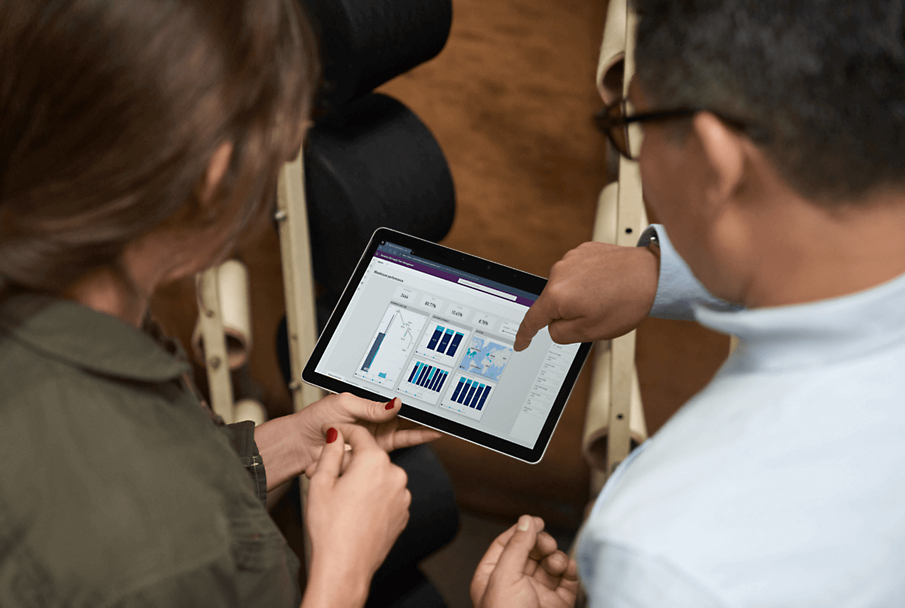
What does modernization mean?
Modernization is the act of updating organizational processes, systems, and tools to the most current versions or best practices. In the context of cloud computing, modernization is the process of transitioning an organization's applications, processes, and data management to a cloud-first approach. The goal is to improve organizational and technological performance, enhance the quality of customer and employee experiences, and accelerate time to market for new offerings and updates.



What is application modernization?
Application modernization is the process of updating an organization's existing apps to a cloud-first model—sometimes called legacy modernization. If an organization uses on-premises apps, modernization may involve migrating those apps to a public, private, or hybrid cloud. Commonly modernized apps and data include:
- .NET apps
- Linux web apps
- Java apps
- SAP apps
- SQL databases
An organization's current software systems and programs might have been great when they were first implemented, but they may not be able to keep pace with the latest (or future) technology. One approach to tackling this challenge is to start again from scratch—building or buying new apps that are compatible with the most current technology stack available. (While the most current stack is always evolving, some of the most recent drivers of modernization include new security best practices, scalability requirements, and advancements in AI, virtualization, IoT, containers.) However, this approach can be both costly and time-consuming. And the challenge will persist: Even the most current app can be outpaced by its technology ecosystem.
Instead of starting from scratch by building completely new apps, organizations can modernize the apps that they already have. It's also important to note that it's often possible—and more practical—to approach modernizing apps in stages. For example, many organizations start by simply moving their apps from their on-premises datacenters to the cloud in a "lift and shift" migration, allowing them to take immediate advantage of the most basic benefits of cloud computing. From there, they can move on to more advanced modernization techniques, such as rebuilding all or some of the parts of their apps to adopt newer capabilities or best practices.
What are the benefits of app modernization?




Application modernization steps and strategies

Modernization pillars
The steps and strategies for successful app modernization should work towards supporting a framework of organizational goals. For example, the Azure Well-Architected Framework has five architectural pillars geared towards organizational goals—these can be used for app modernization as well:
- Reliability: The ability of a system to recover from failures and continue to function.
- Security: Protecting applications and data from threats.
- Cost optimization: Managing costs to maximize the value delivered.
- Operational excellence: Operations processes that keep a system running in production.
- Performance efficiency: The ability of a system to adapt to changes in load.



App modernization steps
The process of modernizing an organization's apps can be broadly defined by three steps.
- Planning. This first step requires organizations to think carefully about their app modernization goals and define their strategy before any action is taken. This is the time to discover and assess existing apps and environments in preparation for change.
- Implementation. During this step, organizations build new skills and begin modernizing their apps iteratively. An iterative modernization approach gives organizations the flexibility to change their project scope or strategy as needed.
- Operations. App modernization is not a one-and-done deal. Once organizations move to a cloud-first approach, they can use cloud platform services and tools to help secure, govern, manage, and optimize their apps.

App modernization strategies
These strategies are distinguished by an organization's modernization goals and the need for code changes to the apps themselves. An app modernization strategy is defined during the planning step and put into effect during the implementation step.



Modernizing the app development process
In addition to modernizing apps themselves, a critical element of any organization's long-term strategy should be to modernize its approach to app development, also known as Developer Velocity. This includes modernizing developer teams' tools and processes to maximize their productivity, collaboration, and work quality. There are tools, analyst studies, and other resources to help organizations assess and improve their Developer Velocity.
Tools and services
Organizations looking to modernize their applications have many ways to go about it. Technologies that support organizations in optimizing their IT assets include:
Cloud computing
Internet-based cloud services can increase application performance, efficiency, and scale.
Containers
These packages of software bundle together application code, which enables seamless deployment across multiple environments.
Microservices
This architectural approach makes application development more agile by allowing each core function—also known as a service—to be built independently.
Automation
Third-party services that automatically perform common tasks can help optimize application deployment, management, and diagnostics.
AI and machine learning
Intelligent services and solutions help companies mine richer insights from their applications and data.
Application modernization services
Fully managed services can help companies accelerate application development, improve customer and employee experiences, and increase application security and reliability.

-
Azure Cosmos DB
Modernize scalable, high-performance apps with a fully managed NoSQL database service.

-
Azure API Management
Move faster with unified API management across multicloud and hybrid environments.

-
Azure DevOps
Plan smarter, collaborate better, and ship faster than before with a set of modern dev services.

-
Azure Spring Apps
Build and deploy Spring Boot apps with a fully managed service from Microsoft and VMware.

-
Azure App Service
Quickly and easily create enterprise-ready web and mobile apps for any platform or device.

-
Azure Web Application Firewall
Help protect apps with a powerful cloud-native web app firewall service.

-
Azure SQL Managed Instance
Modernize existing apps at scale with familiar tools, skills, and resources.

Application modernization tools
Modernizing existing IT systems may seem daunting at first. But organizations that want to update their technology investments don't have to go it alone. Cloud providers offer many assessment tools, methodologies, and programs designed to help enterprises update their systems.

For example, Microsoft Azure offers the following resources to help enterprises begin modernizing at their own pace:
E-book: Cloud Migration and Modernization with Microsoft Azure
an overview of migration and modernization insights, strategies, and tips for getting started.
Azure Migrate
a clearinghouse of Azure migration tools for almost any modernization scenario.
Azure Migration and Modernization Program
expert help, technical training, and resources that enterprises can use to confidently set up their cloud environment.
Microsoft Cloud Adoption Framework for Azure
a proven collection of documentation, guidance, best practices, and tools designed to accelerate cloud adoption.
Azure App Service migration tools
free, intuitive tools to help businesses quickly assess their web apps and migrate them to Azure.
Documentation: ASP.NET app containerization and migration to Azure App Service
step-by-step guidance on containerizing and moving ASP.NET apps to Azure using the Azure Migrate App Containerization tool.
Strategic Migration Assessment and Readiness Tool (SMART)
an assessment tool that helps companies gauge how ready they are to migrate their applications to Azure.
Application and Data Modernization Readiness Tool
an assessment tool that helps companies evaluate their business strategies for modernizing their apps and data.
FAQs
-
Through application modernization, organizations transition their apps to a cloud-first model. This may involve migration if they are using on-premises apps.
-
"Legacy modernization" is another way of saying "application modernization." However, both older and newer apps can be modernized with cloud technology to achieve greater agility, stability, and innovation.
-
Application modernization offers a variety of benefits both for the apps themselves and the organization modernizing them. Key benefits can include increased efficiency, compatibility with cloud technology, improved security, higher availability, and accelerated time to market.
-
There are three overarching steps for application modernization: planning, implementation, and operations. Planning includes defining a modernization strategy. Implementation involves skill-building and modernizing apps. Operations covers ongoing governance, management, and optimization.
-
App modernization strategies should be designed to support an organization's modernization goals. The Azure Well-Architected Framework lays out five pillars that work towards those goals: Reliability, security, cost optimization, operational excellence, and performance efficiency.
There are four broad modernization strategies, each distinguished by the level of code changes that an organization wants to make to their apps. Rehosting moves the app as-is from an older environment to a newer one. Replatforming entails some code changes to connect apps to the cloud. Similarly, refactoring also calls for some code changes so apps get the most out of a cloud-first environment. Rearchitecting involves significant modifications to apps for cloud scalability. Rebuilding requires recreating apps using cloud-native solutions. Replacing swaps an organization's apps for a completely different one to meet current business needs.
-
There are a wide variety of application modernization tools and services available depending on what an organization needs. For example, if an organization wants to optimize costs, operate confidently, and ship features faster by bringing apps and data to the cloud, a fully managed service like Azure App Service could be a good fit.









